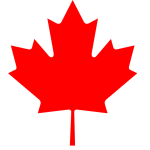is preparing to introduce new guidelines for the operation of unmanned air vehicles similar to those being proposed in Europe.
The new regulations were first introduced in May 2015, and are considered to be more risk-based than those currently used, which only distinguish between the commercial or recreational operation of small UAVs.
A consultation between May and August gained feedback on the proposals, but a general election in Canada at the end of 2015 saw a change of government which delayed their introduction.
They are expected to be enforced by the end of 2016, but exactly when remains to be seen.
Previously, the operation of small unmanned aircraft of 35kg (77lb) or less for recreational purposes was unregulated, as it was expected that operators would fly them safely.
If operators wanted to fly them commercially, or if they were over 35kg, a special certificate was required, alongside the submission of flight plans.
It is now proposed classification will be based on risk, Martin Sheehan, partner at the Fasken Martineau law firm in Montreal, tells Flightglobal.
Aircraft will be categorised as either small UAVs used for complex operations, small UAVs for simple operations, and a “very small” category for those weighing 2kg or less.
“Small aircraft” will now be categorised as under 25kg, and those that fall into the “complex” category will need to be registered with Transport Canada. Additionally, an age restriction on the operator will be introduced, with those flying complex missions having to be 16 years or older – or 14 if supervised – with a permit.
EASA is also proposing risk-based regulations for UAVs operated in Europe, which includes an “open” category for aircraft weighing 25kg or less that do not need authorisation to operate, either commercially or recreationally.
Sheehan says the proposed regulations have generally been accepted in Canada, although there are still parties on both sides of the debate asking for more or less regulation.
“Countries are leapfrogging each other at the moment to allow for these operations,” Sheehan says.
One element of UAV operations missing from Canada’s proposals is beyond-line-of-sight activity, which is not permitted under current or proposed guidelines.
Sheehan notes there are key commercial industries in Canada that UAVs can be used in, including building inspection, mapping, and filmmaking.
“The ones waiting for the beyond-line-of-sight operations would be shipping, delivery and agriculture,” Sheehan says.
Source: Flightglobal

